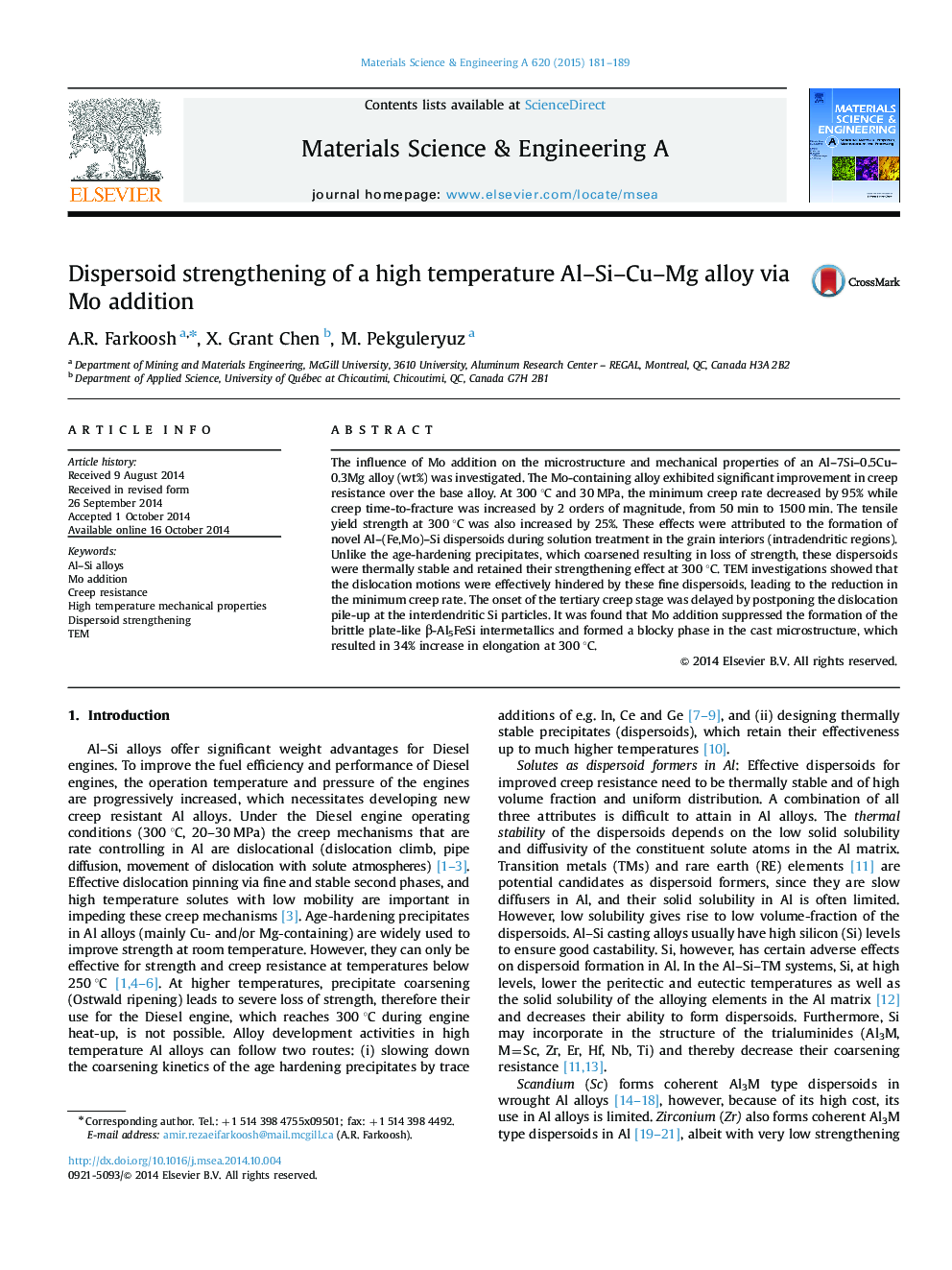| Article ID | Journal | Published Year | Pages | File Type |
|---|---|---|---|---|
| 1574587 | Materials Science and Engineering: A | 2015 | 9 Pages |
Abstract
The influence of Mo addition on the microstructure and mechanical properties of an Al-7Si-0.5Cu-0.3Mg alloy (wt%) was investigated. The Mo-containing alloy exhibited significant improvement in creep resistance over the base alloy. At 300 °C and 30 MPa, the minimum creep rate decreased by 95% while creep time-to-fracture was increased by 2 orders of magnitude, from 50 min to 1500 min. The tensile yield strength at 300 °C was also increased by 25%. These effects were attributed to the formation of novel Al-(Fe,Mo)-Si dispersoids during solution treatment in the grain interiors (intradendritic regions). Unlike the age-hardening precipitates, which coarsened resulting in loss of strength, these dispersoids were thermally stable and retained their strengthening effect at 300 °C. TEM investigations showed that the dislocation motions were effectively hindered by these fine dispersoids, leading to the reduction in the minimum creep rate. The onset of the tertiary creep stage was delayed by postponing the dislocation pile-up at the interdendritic Si particles. It was found that Mo addition suppressed the formation of the brittle plate-like β-Al5FeSi intermetallics and formed a blocky phase in the cast microstructure, which resulted in 34% increase in elongation at 300 °C.
Related Topics
Physical Sciences and Engineering
Materials Science
Materials Science (General)
Authors
A.R. Farkoosh, X. Grant Chen, M. Pekguleryuz,
